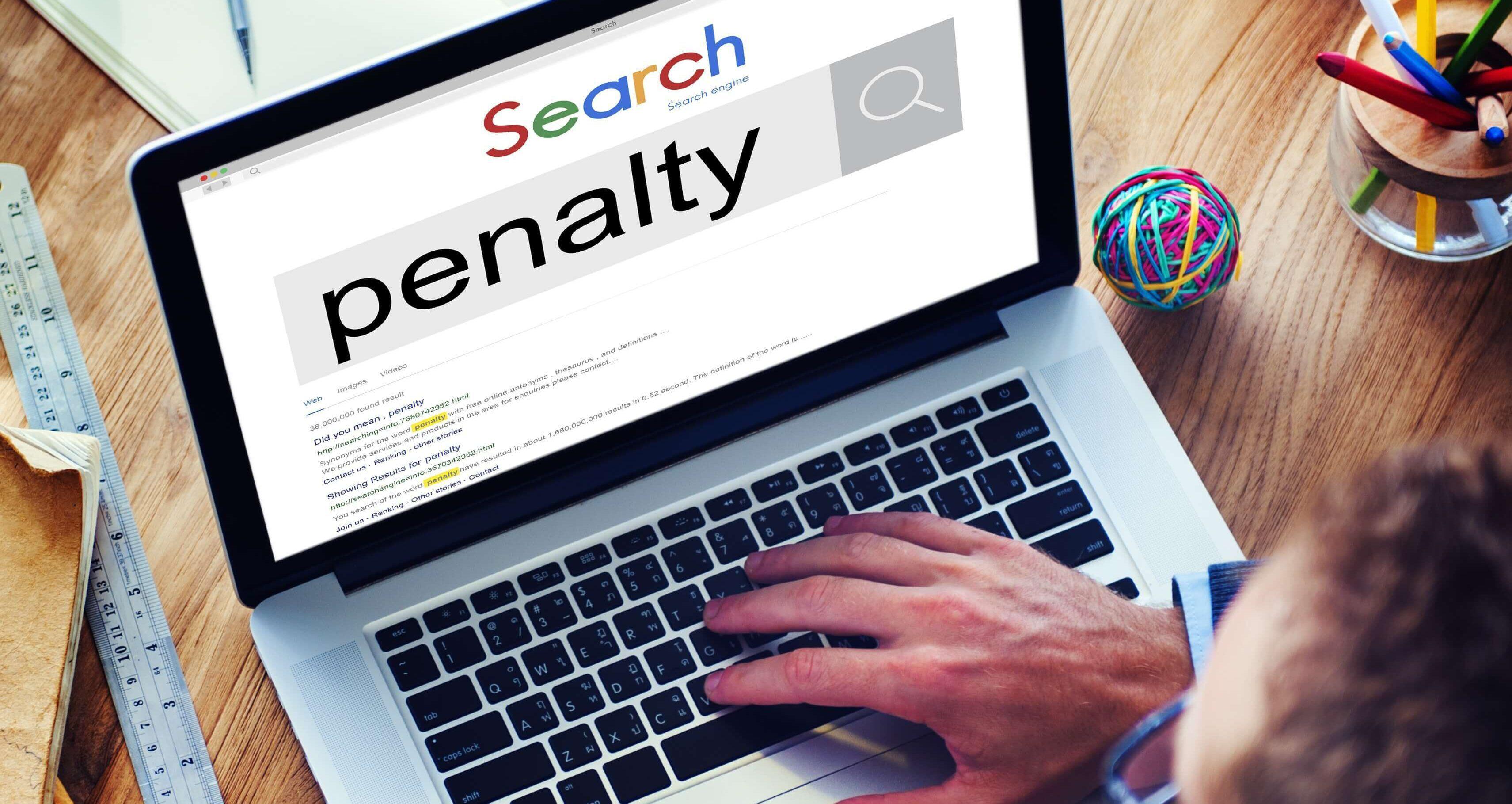If you want to have a successful website and business, being present on Google is a must.
Google is the most popular search engine, with a market share of over 92% and over 8.5 billion searches daily.
A billion active users monthly presents a significant opportunity, but success isn't just about visibility. It's also about understanding and avoiding Google's penalties.
This article will provide simple and effective tips to thrive on Google while avoiding common pitfalls.
What Is a Google Penalty?
A Google Penalty is a sanction or punishment that a website can receive if it does not follow the specific Google guidelines regarding keyword stuffing, SEO, backlinks, etc.
Usually, websites are penalized when there is an update in Google's ranking algorithm or after conducting manual reviews.
Each type of penalty has a different effect on websites, ranging from a drop in ranking, lower website traffic, or partial or total removal from the Google index.
How to Check if Your Website Is Penalized by Google

Google penalties can severely impact your website. It is therefore important to be able to identify and address them promptly.
Here's a consolidated guide to check for Google penalties:
Penalty Type: Determine if the penalty affects your entire site or specific pages.
Using Google Search Console: Access this tool via your account to check for penalties. Navigate to "search traffic" and then "manual actions" for any penalty-related messages.
Website Traffic Analysis: Monitor significant traffic drops through Google Analytics, comparing these changes with any recent updates to Google's guidelines.
Domain Check: Search your domain on Google. If it's not in the top ten results, it might be penalized and de-indexed. For partial penalties, search your domain with main keywords to see if any pages are missing.
Page Rank and Visitor Statistics: Review your page rank and visitor count over specific periods to identify when a penalty might have occurred.
Website Audit: Conduct an audit for non-compliant SEO practices, such as keyword stuffing, excessive pop-up ads, poor-quality backlinks, lack of security certificates, or HTTPS.
Robots.txt Verification: Confirm if Google's search engine robots can crawl your site by appending "robots.txt" to your domain (e.g., www.domainname.com/robots.txt) to check for crawling permissions.
Types of Google Penalties

Identifying the type of Google penalty is the first crucial step in addressing issues with your website.
Google issues various penalties, each affecting your site differently.
Here are the four main types:
Automated or Algorithm-Based Penalties
These are issued automatically for non-compliance with Google guidelines, especially after updates like the Panda (targeting low-quality content) or Penguin (dealing with low-quality links) updates.
Manual Penalty
- Result from a manual action review by Google's webspam team.
- It usually comes after an automated penalty trigger.
- The website owner is then notified via email.
- Fixing the issues and contacting the team for a re-examination is good practice.
- Google Search Console can be used to check for manual penalties.
Partial Manual Penalties
They are usually applied after a manual review if certain web pages violate Google's guidelines or contain inappropriate content.
Site-Wide Penalties
Site-wide penalties are the most severe, affecting the entire website. They're issued to websites Google has identified as user-generated spam, leading to significant ranking drops, de-indexing, or even blocklisting
What NOT to Do: Keeping Your Website Off Google's Ban List
Low-Quality Content: Avoid thin content and low-quality guest posts to prevent Google penalties and de-indexing.
Duplicate Content: Google penalizes plagiarized or software-generated content as it's seen as copied from other websites.
Low-Quality Backlinks: Steer clear of manipulative, deceptive, or irrelevant backlinks, including those from banned, adult, or unrelated sites.
Link-Buying Schemes: Refrain from participating in link schemes or Private Blogging Networks, as Google bans unnatural link building.
Spam Content: Avoid using nonsensical, scraped, or auto-generated content, to prevent being marked as spam. They also violate Google guidelines.
Cloaking: Don't show different content to Google than to users; it's a banned Black Hat SEO technique.
Misleading Redirects: Avoid redirecting users to pages other than the ones indexed by Google, as it is considered deceptive.
Slow Loading Speeds: Ensure your website loads faster than the average (10.3 seconds on desktop, 27.3 seconds on mobile) to avoid ranking penalties.
Cyber Attacks: Protect your website from hacking. If your website gets hacked or if someone targets it, Google could penalize you.
Improper Data Structure: Follow Google's structured data guidelines to avoid algorithm-based penalties for manipulative rich snippets.
Hidden Text: This is a technique for tricking search engines. Don't hide text by matching it to the background color; Google views this as manipulative.
Keyword Stuffing: Avoid excessive or irrelevant keyword usage to prevent being penalized for manipulative SERP ranking efforts
Tips to Recover From a Google Penalty
The best strategy to avoid a Google Penalty is to follow their guidelines from the start. Not all penalties can be avoided, but careful and correct practices are key.
Shortcuts may initially boost search rankings, but Google often detects and penalizes them.
Here are tips to help you stay penalty-free:
Always keep an eye out for new guideline updates and study them in detail.
Double-check the external links to your website and the content they have regularly.
Do not include backlinks in your content that are unnatural and low-quality.
Update your content, backlinks, and SEO each time there is a change in the guidelines.
Choose affiliate links and ads that are appropriate and relevant to your website.
Always correct all issues and mistakes when penalized and submit a request for reconsideration.
Check your security regularly and pay attention to it to prevent cyber attacks.
Make sure to choose the appropriate web hosting.
Mastering Google Webmaster Tools to Avoid Penalties
Google Webmaster Tools, now known as Google Search Console, is an essential tool for monitoring and enhancing your website's presence in Google search results.
By actively using this tool, you can stay ahead of potential issues and maintain a healthy and penalty-free website.
Here's how:
Monitor Search Traffic: Regularly check your search traffic data for any sudden drops, which could indicate a penalty or issue with your website.
Review Crawl Errors: Keep an eye on crawl errors. This section highlights problems Googlebot encountered while crawling your site, such as 404 errors.
Receive Alerts for Manual Penalties: Google Search Console notifies you of any manual penalties applied to your site, allowing for prompt action.
Check for Security Issues: Stay updated on any security issues Google might have detected on your site, such as hacking or malware.
Submit Sitemaps: Regularly submit and update your sitemap for Google to crawl. This ensures that Google is aware of all the pages on your site, including any new ones.
Use the 'Fetch as Google' Feature: Use this feature to see how Googlebot views your page. This can help identify issues that might lead to penalties, such as hidden text or cloaking.
Analyze Search Queries: Analyze which queries bring users to your site and their click-through rate. Significant changes can signal content or SEO issues.
Use the Links to Your Site Section: This section provides insight into your backlink profile. Sudden changes or suspicious backlinks could be a red flag.
Responding to Google Algorithm Changes: Best Practices
After updates, watch your website's analytics for changes in traffic or rankings to understand the impact.
Always focus on creating high-quality content that benefits users, as this aligns with Google's priority on content quality.
Improve User Experience (UX) by ensuring your site is mobile-friendly, loads quickly, and is easy to navigate.
Use Google Search Console to find and fix problems like crawl errors or security issues that might impact your site's performance.
Regularly update your SEO tactics, like keywords and meta tags, to align with the latest algorithm rules.
Check your site for any penalty risks and focus on E-A-T (Expertise, Authoritativeness, Trustworthiness), especially for important topics like finance and health.
If needed, consider professional SEO help for complex algorithm updates.
Takeaway
Google strictly enforces its guidelines, regularly updating them to prevent cheating and shortcuts.
Regardless of your skills, don't try to outsmart Google, as it uses sophisticated methods to detect and penalize violators.
Familiarize yourself with its guidelines and follow the tips in this article for a smooth journey to the top without setbacks.
Frequently Asked Questions
How do I produce high-quality content for my blog?
To create amazing content for your fitness blog, you will need to do proper research and take your time. Write fewer posts, but make sure that the ones you’ve written stand out.
Can I host multiple websites?
Yes. Some packages even give you unlimited domains. However, the more you host, the slower your speeds will be.
Is there more than one Content Management System?
Absolutely! There are hundreds of CMSs available, and they all work in different ways.
How do I get rid of a Google penalty?
To remove the Google penalty, first identify the affected algorithm and adjust your site to align with Google's guidelines. After making changes, Google will re-crawl your site and may remove the penalty if it meets their standards.
How long does it take to recover from a Google penalty?
Recovery time from a Google penalty varies with each case, depending on its complexity and the types of fixes needed. It can range from a few weeks to several months for a site to recover.

I've been navigating the web hosting waters for years now. As the Chief Editor at Verpex, I team up with some awesome writers to dish out the good stuff on hosting. Got a Master's in Journalism, so I always have an eye out for quality. Whether you're just dipping your toes or you're a seasoned surfer, I'm here to make everything web hosting feel like a breeze
View all posts by Julia Lozanov



















